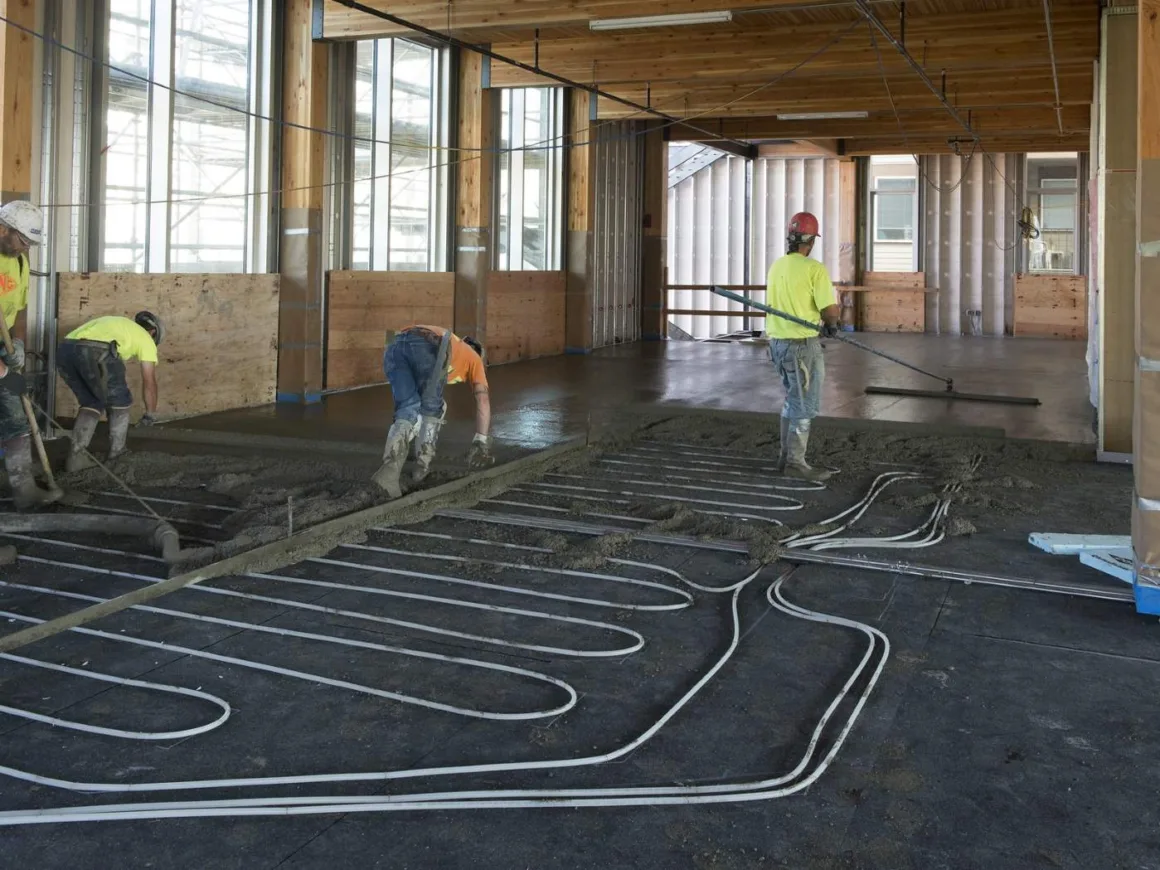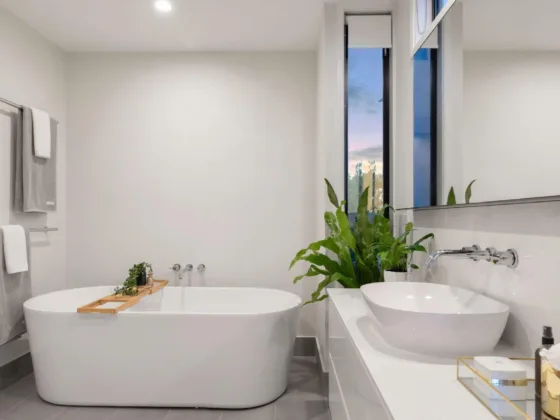Table of Contents Show
As we venture into the cooler months, the quest for efficient and comfortable home heating solutions becomes paramount. Among the myriad of options available, radiant floor heating stands out for its efficiency and discreet comfort. This innovative heating method not only keeps your toes warm but also ensures that your entire living space is enveloped in gentle, consistent heat.
What is Radiant Floor Heating?
Radiant floor heating is a system that provides heat directly to the floor of a house. The technology relies on a series of pipes or heating cables buried beneath the floor, through which hot water or electric current flows, thus warming up the surface above. Unlike traditional heating systems that heat air, radiant floor heating targets solid objects and surfaces, distributing heat uniformly across the room.
How Does It Work?
The operation of radiant floor heating can be categorised into two main types: hydronic and electric.
- Hydronic Systems: These systems use water heated by a boiler that circulates through a loop of pipes under the floor. The heat from the water is transferred to the floor surface and then radiates upward, warming the room efficiently and evenly.
- Electric Systems: Electric radiant floors are equipped with electric cables placed under the floor. When electricity flows through these cables, they heat up and transfer the warmth directly to the floor.
The choice between hydronic and electric systems often depends on your heating needs, the size of the area to be heated, energy efficiency considerations, and whether or not your property already has ducted gas heating in Perth, for example.
The Key Benefits of Radiant Floor Heating
- Comfort and Consistency: Radiant floor heating provides a unique comfort level as the heat starts at the ground level, radiating upward and evenly throughout the room, eliminating cold spots. Unlike forced-air systems that can create uneven temperatures, radiant heating ensures consistent warmth across all areas of a room, making it especially cozy during the colder months.
- Energy Efficiency: Since radiant heating systems heat directly from the floor, they minimize heat loss, making them more efficient than traditional forced-air systems where heat can be lost through ducts. Because the system heats objects and people directly rather than just warming the air, you can often set your thermostat lower while still feeling comfortably warm, leading to potential energy savings.
- Improved Air Quality: This form of heating reduces the circulation of air within a space that can carry dust and allergens, promoting a healthier indoor environment. Without blowers to stir up dust particles, homes with radiant floor heating may experience fewer allergy issues and improved respiratory health for occupants.
- Silent Operation: Radiant floor heating operates silently, unlike traditional heating systems that often involve noisy blowers. The absence of clicking radiators or whooshing vents means your home remains peaceful and quiet, which is particularly beneficial for light sleepers or those seeking a tranquil living environment.
- Aesthetic and Space Saving: With no radiators or air vents in sight, radiant floor heating allows greater design and furniture placement freedom. You can maximize your living space without worrying about blocking heat sources or compromising interior aesthetics. This creates a cleaner look in your home and offers more flexibility in furniture arrangements.
Radiant floor heating represents a sophisticated and highly efficient method of keeping your home warm.
Bottom Line
Whether you’re building a new home or looking for ways to enhance your current heating system, the seamless integration and benefits of radiant floor heating are certainly worth considering. As you ponder the possibilities for your home, remember that a tailored approach combining radiant floor heating with systems like ducted gas heating can offer the ultimate comfort and efficiency. Embracing radiant floor heating could transform your living space into a warm, inviting, and energy-efficient haven during the chilly seasons. energy-efficient haven during the chilly seasons.
FAQs (Frequently Asked Questions)
Radiant floor heating is a system that provides heat directly to the floor surface, creating a warm and comfortable environment in your home. It operates by warming the floor itself, which then radiates heat into the room.
The operation of radiant floor heating can be categorized into two main types: hydronic and electric systems. Hydronic systems circulate warm water through pipes installed beneath the flooring, while electric systems use electric heating cables or mats to generate warmth.
Radiant floor heating offers several key benefits, including enhanced comfort and consistency. Unlike traditional heating methods that can create hot and cold spots, radiant heating provides an even distribution of warmth throughout the space.
Yes, radiant floor heating is considered energy efficient. Warming the objects in a room rather than just the air, allows for lower thermostat settings without sacrificing comfort, leading to potential energy savings.
Yes, radiant floor heating can be retrofitted into existing homes, although the complexity and cost may vary based on your current flooring and structural setup. It’s advisable to consult with a professional to determine the best approach.
Most types of flooring are compatible with radiant floor heating, including tile, stone, laminate, and engineered wood. However, carpets may require specific considerations to ensure effective heat transfer.










